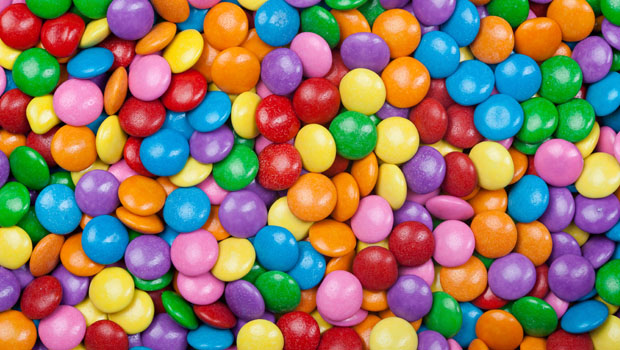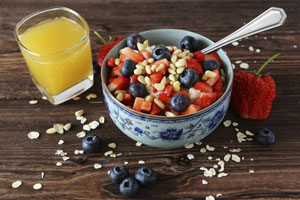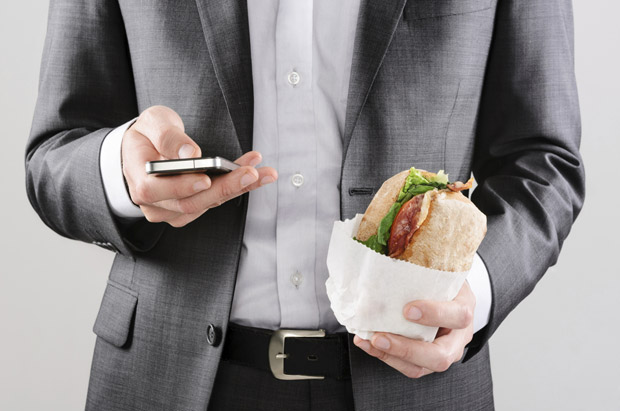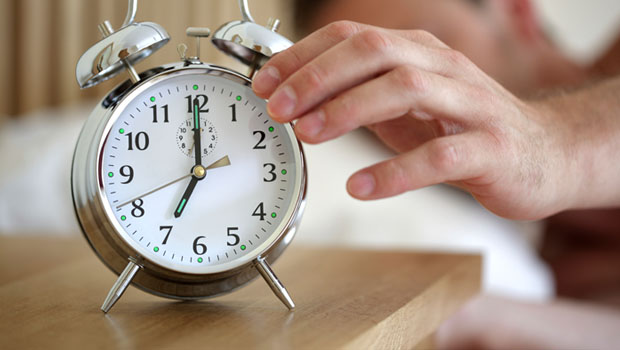Curbing the Binge

I recently found myself sitting at a table with a bowl of brightly colored pretzel M&Ms. I wasn’t feeling particularly hungry or even craving sweets, but it still didn’t take me long to reach out and sample one. I was hooked with the first crunch. As I experienced the sweetness, the saltiness, and the crunch all at once, I found that I was already planning to take another one…or maybe two. Or maybe a whole handful. Even while I was still chewing the first one, I was making internal bargains, a plan to eat more without feeling like a glutton.
Not every food does this to us. We rarely hear someone say, “I couldn’t stop with just one stalk of broccoli.” So what is it that makes these candies taste like “more”? According to clinical health psychologist Dr. Lynn Williams, the combination of fat, sugar, and salt in the M&Ms acts on the pleasure centers of the brain on the same circuit as drug and alcohol addiction.
“It boils down to the activating of some of the pleasure neurotransmitters in the brain, which are primarily the dopamine receptors and, to a lesser extent, serotonin,” says Dr. Williams, whose practice, Your Mind Health, is located in Vero Beach, Florida.
Dopamine and serotonin are neurotransmitters that affect mood. When they are triggered in your brain, they make you feel good, and that can keep you reaching for more of those same foods that brought on that good feeling in the first place. This is true not just of candy, but of other simple carbohydrates, as well, she says.
“Your body can’t tell the difference between mashed potato and a candy bar because they [both] break down into pure sugar,” she says.
When you eat bread and butter at the beginning of a meal at a restaurant you get an immediate hit of fat, sugar, and salt. The bread might not taste sweet, but the carbohydrates it contains break down quickly into sugar when they hit your stomach, Dr. Williams says. Instead of filling up and eating less at your meal, you’re setting yourself up to be even hungrier by the time your food arrives.
“To test it, take a piece of bread or a saltine, chew thoroughly and hold it in your mouth for a full minute. I swear to you, you’ll think you swallowed a sugar cube,” she says.
This physiological effect is not news to the companies that produce the processed foods that fill the aisles of the supermarkets. Since the primary objective of these companies is to deliver profits for their shareholders, they want to sell as much food as possible, and it is in their best interest to make their food alluring. Pulitzer Prize-winning investigative journalist Michael Moss recently wrote about this in his book, Salt Sugar Fat: How the Food Giants Hooked Us. In it, Moss reveals that the major manufacturers of processed foods employ scientists to engineer the perfect balance of fat, sugar, and salt to take maximum advantage of their effect on those pleasure-inducing neurotransmitters. These scientists have worked to identify, for example, the precise amount of sugar in a product to make it the most tasty to the most people without overdoing it and having the food be too sweet. That perfect balance is called the “bliss point” in the food industry. Speaking to Healthwatch with Dr. David Naimon, Moss said, “From a public health standpoint, one of the big issues is that companies are creating bliss points no longer just for soda and ice cream and desserts, but there are now bliss point-created products all around the supermarket – as breads, pasta sauces, yogurts suddenly began having lots and lots of sugar in them.”
The food industry has tapped in to our psyche, says registered dietician Aarti Batavia, who runs Nutrition and Wellness Consulting LLC in Michigan. She encourages her clients to be more mindful, not just about what they eat, but about when and how they eat. You can avoid eating a lot of fat, sugar, and salt by being more aware of the experience of eating.
“Savor your food, and feel full in the moment. That is the the same reason our ancestors got us into the habit of praying before we eat,” she says.
Batavia also stresses the importance of drinking enough water. She says that we often confuse thirst with hunger and that one good way to avoid the mindless consumption of junk food is to keep a bottle of water nearby at all times. If you don’t like drinking water, she says, you can jazz it up a bit with lemon or lime juice or some mint leaves, but don’t reach for a sugary soda, even diet, instead.
 Being mindful about what you eat, however, doesn’t mean you can never have the foods you really like, even if they are loaded with that sneaky trio of fat, sugar, and salt. The key, says Dr. Williams, is to prepare your body for those foods so that you can have them without triggering intense cravings. If you reach for sugary snacks or even simple carbohydrates on an empty stomach, they will cause your blood sugar to spike, leading shortly thereafter to a crash and a feeling of being hungry for more. On the other hand, if you start with a salad with a lot of fiber and 3 or 4 ounces of pure protein, followed by lots of low-glycemic vegetables, these will slow the absorption of sugar and keep your blood sugar from spiking when you follow that healthy meal with a small but decadent treat. Meat is not the only option for getting some protein with your salad; you can garnish with a few ounces of cheese, yogurt, tofu or eggs for the same effect as chicken or fish. When you do get to your modest dessert after setting your digestive system to work on all that healthy protein and fiber, you’ll be able to enjoy it without the sugars going right to work on the pleasure centers of your brain and triggering more cravings.
Being mindful about what you eat, however, doesn’t mean you can never have the foods you really like, even if they are loaded with that sneaky trio of fat, sugar, and salt. The key, says Dr. Williams, is to prepare your body for those foods so that you can have them without triggering intense cravings. If you reach for sugary snacks or even simple carbohydrates on an empty stomach, they will cause your blood sugar to spike, leading shortly thereafter to a crash and a feeling of being hungry for more. On the other hand, if you start with a salad with a lot of fiber and 3 or 4 ounces of pure protein, followed by lots of low-glycemic vegetables, these will slow the absorption of sugar and keep your blood sugar from spiking when you follow that healthy meal with a small but decadent treat. Meat is not the only option for getting some protein with your salad; you can garnish with a few ounces of cheese, yogurt, tofu or eggs for the same effect as chicken or fish. When you do get to your modest dessert after setting your digestive system to work on all that healthy protein and fiber, you’ll be able to enjoy it without the sugars going right to work on the pleasure centers of your brain and triggering more cravings.
Another thing you can do to avoid subjecting yourself to those powerful cravings is eat more food that you create yourself from fresh ingredients. Not only does it allow you to control the amount of fat, sugar, and salt to add to a dish, but it helps you avoid preservatives in your diet, says Dr. Williams. There is credible research that preservatives may help set up cravings and cause blood sugar to become unstable, she says.
A good place to start is with breakfast. Real, old-fashioned oatmeal is not much more work than those pre-packaged, overly sweetened, preservative-laden packets you find in the cereal aisle. You can add some healthy fat with a couple of ounces of nuts and get some fiber and healthy sugar from berries or apples with the skin still on them. (The apple skin contains fiber which slows down your body’s absorption of the sugar in the apple.)
If you make your oatmeal with milk, go ahead and go for the two-percent variety over skim. Believe it or not, having that small amount of fat in the milk will keep your blood sugar from spiking because it balances out the sugar in the milk. Without it, you are just adding milk sugar to your food. In fact, if you only have the options of whole milk or skim, you are better off with whole milk in spite of the extra calories, Dr. Williams says.
Fat, sugar, and salt make our food tastier, more enjoyable, and more addicting, but it is possible to enjoy our carbs, and sweet and salty snacks, without the draw to binge on them. The key is to keep your diet balanced and prepare for those treats by eating healthy protein, healthy fat, and low glycemic carbs whenever possible.
“You’ve got to know how to eat to minimize the cravings, and that’s in the protein, fiber, and fat,” says Dr. Williams.
Want more news on Type 2 diabetes? Subscribe to our newsletter here.




